
PRECALCULUS ESSENTIALS-MYLAB ACCESS
5th Edition
ISBN: 9781323765869
Author: Blitzer
Publisher: PEARSON
expand_more
expand_more
format_list_bulleted
Concept explainers
Question
Chapter 6.3, Problem 111PE
To determine
To calculate: How many miles must be driven to make the daily cost of basic rental a better deal than an Acme rental.
Expert Solution & Answer
Want to see the full answer?
Check out a sample textbook solution
Students have asked these similar questions
Let R be the region bounded by the following curves. Let S be the solid generated when R is revolved about the given axis. If possible, find the volume of S by both the disk/washer and shell methods. Check that your results agree
y = (x-4) - 1 x = 0, y = 63 revolved about the y-axis
Set up the integral(s) that gives the volume of the solid as a single integral if possible using the disk/washer method. Use increasing limits of integration. Select the correct choice below and fill in any answer boxes within your choice
DA SOD dy + SO
UB.
dy (Type exact answers.)
[ C) dy (Type exact answers )
Set up the integral(s) that gives the volume of the solid as a single integral if possible using the shell method. Use increasing limits of integration. Select the correct choice below and fill in any answer boxes within your choice.
OA.
dx (Type exact answers.)
OB.
dx+
SO
dx (Type exact answers.)
The volume of the solid is
(Type an exact answer.)
A drag racer accelerates at a(t) = 96 ft/s². Assume that v(0) = 0 and s(0) = 0.
a. Determine the position function for t≥ 0.
b. How far does the racer travel in the first 6 s?
c. At this rate, how long will it take the racer to travel
1
mi?
3
d. How long will it take the racer to travel 300 ft?
e. How far has the racer traveled when it reaches a speed of 175 ft/s?
a. The position function for t20 is s(t) =
b. In the first 6 s, the racer travels
ft.
(Simplify your answer. Type an integer or decimal rounded to three decimal places as needed.)
1
c. At this rate, it will take the racer s to travel
mi
3
(Do not round until the final answer. Then round to three decimal places as needed.)
d. It will take the racer
s to travel 300 ft.
(Do not round until the final answer. Then round to three decimal places as needed.)
ft.
e. When the racer reaches a speed of 175 ft/s, it has traveled
(Do not round until the final answer. Then round to three decimal places as needed.)
Find the volume of the solid that is generated when the given region is revolved as described.
The region bounded by f(x) = 8x In x and the x-axis on [1,2] is revolved about the x-axis.
The volume is
(Type an exact answer.)
Chapter 6 Solutions
PRECALCULUS ESSENTIALS-MYLAB ACCESS
Ch. 6.1 - Check Point 1 Solve the triangle shown in Figure...Ch. 6.1 - Check Point 2 Solve triangle ABC if , and b = 12....Ch. 6.1 - Check Point 3 Solve triangle ABC if A = a = 33,...Ch. 6.1 - Prob. 4CPCh. 6.1 - Prob. 5CPCh. 6.1 - Check Point 6 Find the area of a triangle having...Ch. 6.1 - Prob. 7CPCh. 6.1 - Fill in each blank so that the resulting statement...Ch. 6.1 - Prob. 2CVCCh. 6.1 - Prob. 3CVC
Ch. 6.1 - Prob. 4CVCCh. 6.1 - Prob. 5CVCCh. 6.1 - Prob. 1PECh. 6.1 - Prob. 2PECh. 6.1 - Prob. 3PECh. 6.1 - Prob. 4PECh. 6.1 - Prob. 5PECh. 6.1 - Prob. 6PECh. 6.1 - Prob. 7PECh. 6.1 - Prob. 8PECh. 6.1 - Prob. 9PECh. 6.1 - Prob. 10PECh. 6.1 - Prob. 11PECh. 6.1 - Prob. 12PECh. 6.1 - Prob. 13PECh. 6.1 - Prob. 14PECh. 6.1 - Prob. 15PECh. 6.1 - Prob. 16PECh. 6.1 - Prob. 17PECh. 6.1 - Prob. 18PECh. 6.1 - In Exercises 17-32, two sides and an angle (SSA)...Ch. 6.1 - Prob. 20PECh. 6.1 - Prob. 21PECh. 6.1 - Prob. 22PECh. 6.1 - Prob. 23PECh. 6.1 - Prob. 24PECh. 6.1 - Prob. 25PECh. 6.1 - Prob. 26PECh. 6.1 - Prob. 27PECh. 6.1 - Prob. 28PECh. 6.1 - In Exercises 17-32, two sides and an angle (SSA)...Ch. 6.1 - Prob. 30PECh. 6.1 - Prob. 31PECh. 6.1 - Prob. 32PECh. 6.1 - In Exercises 33-38, find the area of the triangle...Ch. 6.1 - Prob. 34PECh. 6.1 - Prob. 35PECh. 6.1 - Prob. 36PECh. 6.1 - Prob. 37PECh. 6.1 - Prob. 38PECh. 6.1 - In Exercises 39-40, find h to the nearest tenth.
Ch. 6.1 - Prob. 40PECh. 6.1 - Prob. 41PECh. 6.1 - Prob. 42PECh. 6.1 - Prob. 43PECh. 6.1 - Prob. 44PECh. 6.1 - Prob. 45PECh. 6.1 - Prob. 46PECh. 6.1 - Prob. 47PECh. 6.1 - 48. The Federal Communications Commission is...Ch. 6.1 - Prob. 49PECh. 6.1 - Prob. 50PECh. 6.1 - Prob. 51PECh. 6.1 - Prob. 52PECh. 6.1 - Prob. 53PECh. 6.1 - Prob. 54PECh. 6.1 - Prob. 55PECh. 6.1 - Prob. 56PECh. 6.1 - Prob. 57PECh. 6.1 - Prob. 58PECh. 6.1 - Prob. 59PECh. 6.1 - Prob. 60PECh. 6.1 - Prob. 61PECh. 6.1 - Prob. 62PECh. 6.1 - Prob. 63PECh. 6.1 - Prob. 64PECh. 6.1 - Prob. 65PECh. 6.1 - Prob. 66PECh. 6.1 - Prob. 67PECh. 6.1 - Prob. 68PECh. 6.1 - Prob. 69PECh. 6.1 - 70. You are cruising in your boat parallel to the...Ch. 6.1 - Prob. 71PECh. 6.1 - Prob. 72PECh. 6.1 - Prob. 73PECh. 6.1 - Prob. 74PECh. 6.1 - Prob. 75PECh. 6.1 - Prob. 76PECh. 6.1 - Prob. 77PECh. 6.1 - Prob. 78PECh. 6.1 - Prob. 79PECh. 6.1 - Prob. 80PECh. 6.1 - Prob. 81PECh. 6.1 - Exercises 81-83 will help you prepare for the...Ch. 6.1 - Prob. 83PECh. 6.2 - Check Point 1 Solve the triangle shown in Figure...Ch. 6.2 - Check Point 2 Solve triangle ABC if a = 8, b = 10,...Ch. 6.2 - Prob. 3CPCh. 6.2 - Prob. 4CPCh. 6.2 - Prob. 1CVCCh. 6.2 - Prob. 2CVCCh. 6.2 - Prob. 3CVCCh. 6.2 - Prob. 4CVCCh. 6.2 - In Exercises 1-8, solve each triangle. Round...Ch. 6.2 - Prob. 2PECh. 6.2 - Prob. 3PECh. 6.2 - Prob. 4PECh. 6.2 - Prob. 5PECh. 6.2 - Prob. 6PECh. 6.2 - Prob. 7PECh. 6.2 - Prob. 8PECh. 6.2 - Prob. 9PECh. 6.2 - Prob. 10PECh. 6.2 - Prob. 11PECh. 6.2 - Prob. 12PECh. 6.2 - Prob. 13PECh. 6.2 - Prob. 14PECh. 6.2 - Prob. 15PECh. 6.2 - Prob. 16PECh. 6.2 - Prob. 17PECh. 6.2 - Prob. 18PECh. 6.2 - Prob. 19PECh. 6.2 - Prob. 20PECh. 6.2 - Prob. 21PECh. 6.2 - Prob. 22PECh. 6.2 - Prob. 23PECh. 6.2 - Prob. 24PECh. 6.2 - Prob. 25PECh. 6.2 - Prob. 26PECh. 6.2 - Prob. 27PECh. 6.2 - Prob. 28PECh. 6.2 - Prob. 29PECh. 6.2 - Prob. 30PECh. 6.2 - Prob. 31PECh. 6.2 - Prob. 32PECh. 6.2 - Prob. 33PECh. 6.2 - Prob. 34PECh. 6.2 - Prob. 35PECh. 6.2 - Prob. 36PECh. 6.2 - Prob. 37PECh. 6.2 - Prob. 38PECh. 6.2 - Prob. 39PECh. 6.2 - Prob. 40PECh. 6.2 - Prob. 41PECh. 6.2 - Prob. 42PECh. 6.2 - Prob. 43PECh. 6.2 - Prob. 44PECh. 6.2 - Prob. 45PECh. 6.2 - Prob. 46PECh. 6.2 - 47. The figure shows a 400-foot tower on the side...Ch. 6.2 - 48. The figure shows a 200-foot tower on the side...Ch. 6.2 - 49. A Major League baseball diamond has four bases...Ch. 6.2 - 50. A Little League baseball diamond has four...Ch. 6.2 - Prob. 51PECh. 6.2 - Prob. 52PECh. 6.2 - Prob. 53PECh. 6.2 - Prob. 54PECh. 6.2 - 55. Describe a strategy for solving an SAS...Ch. 6.2 - Prob. 56PECh. 6.2 - Prob. 57PECh. 6.2 - Prob. 58PECh. 6.2 - Prob. 59PECh. 6.2 - Prob. 60PECh. 6.2 - Prob. 61PECh. 6.2 - Prob. 62PECh. 6.2 - Prob. 63PECh. 6.2 - Make Sense? In Exercises 61-64, determine whether...Ch. 6.2 - Prob. 65PECh. 6.2 - 66. Use the figure to solve triangle ABC. Round...Ch. 6.2 - Prob. 67PECh. 6.2 - 68. The group should design five original problems...Ch. 6.2 - Prob. 69PECh. 6.2 - Prob. 70PECh. 6.2 - Prob. 71PECh. 6.2 - Prob. 72PECh. 6.2 - Prob. 73PECh. 6.2 - Prob. 74PECh. 6.3 - Prob. 1CPCh. 6.3 - Prob. 2CPCh. 6.3 - Prob. 3CPCh. 6.3 - Prob. 4CPCh. 6.3 - Prob. 5CPCh. 6.3 - Prob. 6CPCh. 6.3 - Prob. 7CPCh. 6.3 - Prob. 1CVCCh. 6.3 - Prob. 2CVCCh. 6.3 - Prob. 3CVCCh. 6.3 - Prob. 4CVCCh. 6.3 - Prob. 5CVCCh. 6.3 - Prob. 6CVCCh. 6.3 - Prob. 7CVCCh. 6.3 - Prob. 8CVCCh. 6.3 - Prob. 9CVCCh. 6.3 - Fill in each blank so that the resulting statement...Ch. 6.3 - Prob. 11CVCCh. 6.3 - Prob. 12CVCCh. 6.3 - Prob. 13CVCCh. 6.3 - Prob. 14CVCCh. 6.3 - Prob. 1PECh. 6.3 - Prob. 2PECh. 6.3 - Prob. 3PECh. 6.3 - Prob. 4PECh. 6.3 - Prob. 5PECh. 6.3 - Prob. 6PECh. 6.3 - Prob. 7PECh. 6.3 - Prob. 8PECh. 6.3 - Prob. 9PECh. 6.3 - Prob. 10PECh. 6.3 - Prob. 11PECh. 6.3 - Prob. 12PECh. 6.3 - Prob. 13PECh. 6.3 - Prob. 14PECh. 6.3 - Prob. 15PECh. 6.3 - Prob. 16PECh. 6.3 - Prob. 17PECh. 6.3 - Prob. 18PECh. 6.3 - Prob. 19PECh. 6.3 - Prob. 20PECh. 6.3 - Prob. 21PECh. 6.3 - Prob. 22PECh. 6.3 - Prob. 23PECh. 6.3 - Prob. 24PECh. 6.3 - Prob. 25PECh. 6.3 - Prob. 26PECh. 6.3 - Prob. 27PECh. 6.3 - Prob. 28PECh. 6.3 - Prob. 29PECh. 6.3 - Prob. 30PECh. 6.3 - Prob. 31PECh. 6.3 - Prob. 32PECh. 6.3 - Prob. 33PECh. 6.3 - Prob. 34PECh. 6.3 - Prob. 35PECh. 6.3 - Prob. 36PECh. 6.3 - Prob. 37PECh. 6.3 - Prob. 38PECh. 6.3 - Prob. 39PECh. 6.3 - Prob. 40PECh. 6.3 - Prob. 41PECh. 6.3 - Prob. 42PECh. 6.3 - Prob. 43PECh. 6.3 - Prob. 44PECh. 6.3 - Prob. 45PECh. 6.3 - Prob. 46PECh. 6.3 - Prob. 47PECh. 6.3 - Prob. 48PECh. 6.3 - Prob. 49PECh. 6.3 - Prob. 50PECh. 6.3 - Prob. 51PECh. 6.3 - Prob. 52PECh. 6.3 - Prob. 53PECh. 6.3 - Prob. 54PECh. 6.3 - Prob. 55PECh. 6.3 - Prob. 56PECh. 6.3 - Prob. 57PECh. 6.3 - Prob. 58PECh. 6.3 - Prob. 59PECh. 6.3 - Prob. 60PECh. 6.3 - Prob. 61PECh. 6.3 - Prob. 62PECh. 6.3 - Prob. 63PECh. 6.3 - Prob. 64PECh. 6.3 - In Exercises 59-74, convert each polar equation to...Ch. 6.3 - Prob. 66PECh. 6.3 - Prob. 67PECh. 6.3 - Prob. 68PECh. 6.3 - Prob. 69PECh. 6.3 - Prob. 70PECh. 6.3 - Prob. 71PECh. 6.3 - Prob. 72PECh. 6.3 - In Exercises 59-74, convert each polar equation to...Ch. 6.3 - Prob. 74PECh. 6.3 - Prob. 75PECh. 6.3 - Prob. 76PECh. 6.3 - Prob. 77PECh. 6.3 - Prob. 78PECh. 6.3 - Prob. 79PECh. 6.3 - Prob. 80PECh. 6.3 - Prob. 81PECh. 6.3 - Prob. 82PECh. 6.3 - Prob. 83PECh. 6.3 - Prob. 84PECh. 6.3 - Prob. 85PECh. 6.3 - Prob. 86PECh. 6.3 - Prob. 87PECh. 6.3 - Prob. 88PECh. 6.3 - Prob. 89PECh. 6.3 - Prob. 90PECh. 6.3 - Prob. 91PECh. 6.3 - Prob. 92PECh. 6.3 - Prob. 93PECh. 6.3 - Prob. 94PECh. 6.3 - Prob. 95PECh. 6.3 - Prob. 96PECh. 6.3 - Prob. 97PECh. 6.3 - Prob. 98PECh. 6.3 - Prob. 99PECh. 6.3 - Prob. 100PECh. 6.3 - Prob. 101PECh. 6.3 - Prob. 102PECh. 6.3 - Prob. 103PECh. 6.3 - Prob. 104PECh. 6.3 - Prob. 105PECh. 6.3 - Prob. 106PECh. 6.3 - Prob. 107PECh. 6.3 - Prob. 108PECh. 6.3 - Prob. 109PECh. 6.3 - Prob. 110PECh. 6.3 - Prob. 111PECh. 6.3 - Prob. 112PECh. 6.3 - Prob. 113PECh. 6.3 - Prob. 114PECh. 6.4 - Prob. 1CPCh. 6.4 - Prob. 2CPCh. 6.4 - Prob. 3CPCh. 6.4 - Prob. 4CPCh. 6.4 - Prob. 5CPCh. 6.4 - Prob. 1CVCCh. 6.4 - Prob. 2CVCCh. 6.4 - Prob. 3CVCCh. 6.4 - Prob. 4CVCCh. 6.4 - Prob. 5CVCCh. 6.4 - Prob. 6CVCCh. 6.4 - Prob. 7CVCCh. 6.4 - Prob. 8CVCCh. 6.4 - Prob. 9CVCCh. 6.4 - Prob. 1PECh. 6.4 - Prob. 2PECh. 6.4 - Prob. 3PECh. 6.4 - Prob. 4PECh. 6.4 - Prob. 5PECh. 6.4 - Prob. 6PECh. 6.4 - Prob. 7PECh. 6.4 - Prob. 8PECh. 6.4 - Prob. 9PECh. 6.4 - Prob. 10PECh. 6.4 - Prob. 11PECh. 6.4 - Prob. 12PECh. 6.4 - Prob. 13PECh. 6.4 - Prob. 14PECh. 6.4 - Prob. 15PECh. 6.4 - Prob. 16PECh. 6.4 - Prob. 17PECh. 6.4 - Prob. 18PECh. 6.4 - Prob. 19PECh. 6.4 - Prob. 20PECh. 6.4 - Prob. 21PECh. 6.4 - Prob. 22PECh. 6.4 - Prob. 23PECh. 6.4 - Prob. 24PECh. 6.4 - Prob. 25PECh. 6.4 - Prob. 26PECh. 6.4 - Prob. 27PECh. 6.4 - Prob. 28PECh. 6.4 - Prob. 29PECh. 6.4 - Prob. 30PECh. 6.4 - Prob. 31PECh. 6.4 - Prob. 32PECh. 6.4 - Prob. 33PECh. 6.4 - Prob. 34PECh. 6.4 - Prob. 35PECh. 6.4 - Prob. 36PECh. 6.4 - Prob. 37PECh. 6.4 - Prob. 38PECh. 6.4 - Prob. 39PECh. 6.4 - Prob. 40PECh. 6.4 - Prob. 41PECh. 6.4 - Prob. 42PECh. 6.4 - Prob. 43PECh. 6.4 - Prob. 44PECh. 6.4 - Prob. 45PECh. 6.4 - Prob. 46PECh. 6.4 - Prob. 47PECh. 6.4 - Prob. 48PECh. 6.4 - Prob. 49PECh. 6.4 - Prob. 50PECh. 6.4 - Prob. 51PECh. 6.4 - Prob. 52PECh. 6.4 - Prob. 53PECh. 6.4 - Prob. 54PECh. 6.4 - Prob. 55PECh. 6.4 - Prob. 56PECh. 6.4 - Prob. 57PECh. 6.4 - Prob. 58PECh. 6.4 - Prob. 59PECh. 6.4 - Prob. 60PECh. 6.4 - Prob. 61PECh. 6.4 - Prob. 62PECh. 6.4 - Prob. 63PECh. 6.4 - Prob. 64PECh. 6.4 - Prob. 65PECh. 6.4 - Prob. 66PECh. 6.4 - Prob. 67PECh. 6.4 - Prob. 68PECh. 6.4 - Prob. 69PECh. 6.4 - Prob. 70PECh. 6.4 - Prob. 71PECh. 6.4 - Prob. 72PECh. 6.4 - Prob. 73PECh. 6.4 - Prob. 74PECh. 6.4 - Prob. 75PECh. 6.4 - Prob. 76PECh. 6.4 - Prob. 77PECh. 6.4 - Prob. 78PECh. 6.4 - Prob. 79PECh. 6.4 - Prob. 80PECh. 6.4 - Prob. 81PECh. 6.4 - Prob. 82PECh. 6.4 - Prob. 83PECh. 6.4 - Prob. 84PECh. 6.4 - Prob. 85PECh. 6.4 - Prob. 86PECh. 6.4 - Prob. 87PECh. 6.4 - Prob. 88PECh. 6.4 - Prob. 89PECh. 6.4 - Prob. 90PECh. 6.4 - Make Sense? In Exercises 89-92, determine whether...Ch. 6.4 - Prob. 92PECh. 6.4 - Prob. 93PECh. 6.4 - Prob. 94PECh. 6.4 - Prob. 95PECh. 6.4 - Prob. 96PECh. 6.4 - Prob. 97PECh. 6.4 - Prob. 98PECh. 6.4 - Prob. 99PECh. 6.4 - Prob. 100PECh. 6.4 - Prob. 101PECh. 6.4 - Prob. 1MCCPCh. 6.4 - Prob. 2MCCPCh. 6.4 - Prob. 3MCCPCh. 6.4 - Prob. 4MCCPCh. 6.4 - Prob. 5MCCPCh. 6.4 - Prob. 6MCCPCh. 6.4 - Prob. 7MCCPCh. 6.4 - Prob. 8MCCPCh. 6.4 - Prob. 9MCCPCh. 6.4 - Prob. 10MCCPCh. 6.4 - Prob. 11MCCPCh. 6.4 - Prob. 12MCCPCh. 6.4 - Prob. 13MCCPCh. 6.4 - Prob. 14MCCPCh. 6.4 - Prob. 15MCCPCh. 6.4 - Prob. 16MCCPCh. 6.4 - Prob. 17MCCPCh. 6.4 - Prob. 18MCCPCh. 6.4 - Prob. 19MCCPCh. 6.4 - Prob. 20MCCPCh. 6.4 - Prob. 21MCCPCh. 6.4 - Prob. 22MCCPCh. 6.4 - Prob. 23MCCPCh. 6.4 - Prob. 24MCCPCh. 6.4 - Prob. 25MCCPCh. 6.4 - Prob. 26MCCPCh. 6.4 - Prob. 27MCCPCh. 6.4 - Prob. 28MCCPCh. 6.4 - Prob. 29MCCPCh. 6.4 - Prob. 30MCCPCh. 6.4 - Prob. 31MCCPCh. 6.4 - Prob. 32MCCPCh. 6.5 - Prob. 1CPCh. 6.5 - Prob. 2CPCh. 6.5 - Prob. 3CPCh. 6.5 - Prob. 4CPCh. 6.5 - Prob. 5CPCh. 6.5 - Prob. 6CPCh. 6.5 - Prob. 7CPCh. 6.5 - Prob. 8CPCh. 6.5 - Prob. 9CPCh. 6.5 - Prob. 10CPCh. 6.5 - Prob. 1CVCCh. 6.5 - Prob. 2CVCCh. 6.5 - Fill in each blank so that the resulting statement...Ch. 6.5 - Prob. 4CVCCh. 6.5 - Prob. 5CVCCh. 6.5 - Prob. 6CVCCh. 6.5 - Prob. 7CVCCh. 6.5 - Prob. 8CVCCh. 6.5 - In Exercises 1-10, plot each complex number and...Ch. 6.5 - Prob. 2PECh. 6.5 - In Exercises 1-10, plot each complex number and...Ch. 6.5 - Prob. 4PECh. 6.5 - Prob. 5PECh. 6.5 - Prob. 6PECh. 6.5 - Prob. 7PECh. 6.5 - Prob. 8PECh. 6.5 - Prob. 9PECh. 6.5 - Prob. 10PECh. 6.5 - In Exercises 11-26, plot each complex number. Then...Ch. 6.5 - Prob. 12PECh. 6.5 - Prob. 13PECh. 6.5 - Prob. 14PECh. 6.5 - Prob. 15PECh. 6.5 - Prob. 16PECh. 6.5 - Prob. 17PECh. 6.5 - Prob. 18PECh. 6.5 - Prob. 19PECh. 6.5 - Prob. 20PECh. 6.5 - Prob. 21PECh. 6.5 - Prob. 22PECh. 6.5 - Prob. 23PECh. 6.5 - Prob. 24PECh. 6.5 - Prob. 25PECh. 6.5 - Prob. 26PECh. 6.5 - In Exercises 27-36, write each complex number in...Ch. 6.5 - Prob. 28PECh. 6.5 - Prob. 29PECh. 6.5 - Prob. 30PECh. 6.5 - Prob. 31PECh. 6.5 - Prob. 32PECh. 6.5 - Prob. 33PECh. 6.5 - Prob. 34PECh. 6.5 - Prob. 35PECh. 6.5 - Prob. 36PECh. 6.5 - Prob. 37PECh. 6.5 - Prob. 38PECh. 6.5 - Prob. 39PECh. 6.5 - Prob. 40PECh. 6.5 - Prob. 41PECh. 6.5 - Prob. 42PECh. 6.5 - Prob. 43PECh. 6.5 - Prob. 44PECh. 6.5 - Prob. 45PECh. 6.5 - Prob. 46PECh. 6.5 - Prob. 47PECh. 6.5 - Prob. 48PECh. 6.5 - Prob. 49PECh. 6.5 - Prob. 50PECh. 6.5 - Prob. 51PECh. 6.5 - Prob. 52PECh. 6.5 - Prob. 53PECh. 6.5 - Prob. 54PECh. 6.5 - Prob. 55PECh. 6.5 - Prob. 56PECh. 6.5 - Prob. 57PECh. 6.5 - Prob. 58PECh. 6.5 - Prob. 59PECh. 6.5 - Prob. 60PECh. 6.5 - Prob. 61PECh. 6.5 - Prob. 62PECh. 6.5 - Prob. 63PECh. 6.5 - Prob. 64PECh. 6.5 - Prob. 65PECh. 6.5 - Prob. 66PECh. 6.5 - Prob. 67PECh. 6.5 - In Exercises 65-68, find all the complex roots....Ch. 6.5 - Prob. 69PECh. 6.5 - Prob. 70PECh. 6.5 - Prob. 71PECh. 6.5 - Prob. 72PECh. 6.5 - Prob. 73PECh. 6.5 - Prob. 74PECh. 6.5 - Prob. 75PECh. 6.5 - Prob. 76PECh. 6.5 - Prob. 77PECh. 6.5 - Prob. 78PECh. 6.5 - Prob. 79PECh. 6.5 - Prob. 80PECh. 6.5 - Prob. 81PECh. 6.5 - Prob. 82PECh. 6.5 - Prob. 83PECh. 6.5 - Prob. 84PECh. 6.5 - Prob. 85PECh. 6.5 - Prob. 86PECh. 6.5 - Prob. 87PECh. 6.5 - Prob. 88PECh. 6.5 - Prob. 89PECh. 6.5 - Prob. 90PECh. 6.5 - Prob. 91PECh. 6.5 - Prob. 92PECh. 6.5 - Prob. 93PECh. 6.5 - Prob. 94PECh. 6.5 - Prob. 95PECh. 6.5 - Prob. 96PECh. 6.5 - Prob. 97PECh. 6.5 - Prob. 98PECh. 6.5 - Prob. 99PECh. 6.5 - Prob. 100PECh. 6.5 - Prob. 101PECh. 6.5 - Prob. 102PECh. 6.5 - Prob. 103PECh. 6.5 - Prob. 104PECh. 6.5 - Prob. 105PECh. 6.5 - Prob. 106PECh. 6.5 - Prob. 107PECh. 6.5 - Prob. 108PECh. 6.5 - Prob. 109PECh. 6.5 - Prob. 110PECh. 6.5 - Prob. 111PECh. 6.5 - Prob. 112PECh. 6.5 - Prob. 113PECh. 6.5 - Prob. 114PECh. 6.5 - Prob. 115PECh. 6.5 - Prob. 116PECh. 6.5 - Prob. 117PECh. 6.5 - Prob. 118PECh. 6.6 - Check Point 1 Use Figure 6.51 to show that u = v.
Ch. 6.6 - Prob. 2CPCh. 6.6 - Prob. 3CPCh. 6.6 - Prob. 4CPCh. 6.6 - Check Point 5 If , find each of the following...Ch. 6.6 - Prob. 6CPCh. 6.6 - Prob. 7CPCh. 6.6 - Prob. 8CPCh. 6.6 - Prob. 9CPCh. 6.6 - Prob. 1CVCCh. 6.6 - Prob. 2CVCCh. 6.6 - Prob. 3CVCCh. 6.6 - Prob. 4CVCCh. 6.6 - Prob. 5CVCCh. 6.6 - Prob. 6CVCCh. 6.6 - Prob. 7CVCCh. 6.6 - Prob. 8CVCCh. 6.6 - Prob. 9CVCCh. 6.6 - Prob. 10CVCCh. 6.6 - Prob. 11CVCCh. 6.6 - Prob. 12CVCCh. 6.6 - Prob. 13CVCCh. 6.6 - Prob. 1PECh. 6.6 - Prob. 2PECh. 6.6 - Prob. 3PECh. 6.6 - Prob. 4PECh. 6.6 - Prob. 5PECh. 6.6 - Prob. 6PECh. 6.6 - Prob. 7PECh. 6.6 - Prob. 8PECh. 6.6 - Prob. 9PECh. 6.6 - Prob. 10PECh. 6.6 - Prob. 11PECh. 6.6 - Prob. 12PECh. 6.6 - Prob. 13PECh. 6.6 - Prob. 14PECh. 6.6 - Prob. 15PECh. 6.6 - Prob. 16PECh. 6.6 - Prob. 17PECh. 6.6 - Prob. 18PECh. 6.6 - Prob. 19PECh. 6.6 - Prob. 20PECh. 6.6 - Prob. 21PECh. 6.6 - Prob. 22PECh. 6.6 - Prob. 23PECh. 6.6 - Prob. 24PECh. 6.6 - Prob. 25PECh. 6.6 - Prob. 26PECh. 6.6 - Prob. 27PECh. 6.6 - Prob. 28PECh. 6.6 - Prob. 29PECh. 6.6 - Prob. 30PECh. 6.6 - Prob. 31PECh. 6.6 - Prob. 32PECh. 6.6 - Prob. 33PECh. 6.6 - Prob. 34PECh. 6.6 - Prob. 35PECh. 6.6 - Prob. 36PECh. 6.6 - Prob. 37PECh. 6.6 - Prob. 38PECh. 6.6 - Prob. 39PECh. 6.6 - Prob. 40PECh. 6.6 - In Exercises 39-46, find the unit vector that has...Ch. 6.6 - Prob. 42PECh. 6.6 - Prob. 43PECh. 6.6 - Prob. 44PECh. 6.6 - Prob. 45PECh. 6.6 - Prob. 46PECh. 6.6 - Prob. 47PECh. 6.6 - Prob. 48PECh. 6.6 - Prob. 49PECh. 6.6 - Prob. 50PECh. 6.6 - Prob. 51PECh. 6.6 - Prob. 52PECh. 6.6 - Prob. 53PECh. 6.6 - Prob. 54PECh. 6.6 - Prob. 55PECh. 6.6 - Prob. 56PECh. 6.6 - Prob. 57PECh. 6.6 - Prob. 58PECh. 6.6 - Prob. 59PECh. 6.6 - Prob. 60PECh. 6.6 - Prob. 61PECh. 6.6 - Prob. 62PECh. 6.6 - Prob. 63PECh. 6.6 - Prob. 64PECh. 6.6 - Prob. 65PECh. 6.6 - Prob. 66PECh. 6.6 - In Exercises 65-68, a vector is described. Express...Ch. 6.6 - Prob. 68PECh. 6.6 - Prob. 69PECh. 6.6 - Prob. 70PECh. 6.6 - Prob. 71PECh. 6.6 - Prob. 72PECh. 6.6 - Prob. 73PECh. 6.6 - Prob. 74PECh. 6.6 - Prob. 75PECh. 6.6 - Prob. 76PECh. 6.6 - Prob. 77PECh. 6.6 - Prob. 78PECh. 6.6 - Prob. 79PECh. 6.6 - Prob. 80PECh. 6.6 - Prob. 81PECh. 6.6 - Prob. 82PECh. 6.6 - Prob. 83PECh. 6.6 - Prob. 84PECh. 6.6 - Prob. 85PECh. 6.6 - Prob. 86PECh. 6.6 - Prob. 87PECh. 6.6 - Prob. 88PECh. 6.6 - Prob. 89PECh. 6.6 - Prob. 90PECh. 6.6 - Prob. 91PECh. 6.6 - Prob. 92PECh. 6.6 - Prob. 93PECh. 6.6 - Prob. 94PECh. 6.6 - Prob. 95PECh. 6.6 - Prob. 96PECh. 6.6 - Prob. 97PECh. 6.6 - Prob. 98PECh. 6.6 - Prob. 99PECh. 6.6 - Prob. 100PECh. 6.6 - Prob. 101PECh. 6.6 - Prob. 102PECh. 6.6 - Prob. 103PECh. 6.6 - Prob. 104PECh. 6.6 - Prob. 105PECh. 6.6 - Prob. 106PECh. 6.6 - Prob. 107PECh. 6.6 - Prob. 108PECh. 6.6 - Prob. 109PECh. 6.6 - Prob. 110PECh. 6.6 - Prob. 111PECh. 6.6 - Prob. 112PECh. 6.6 - Prob. 113PECh. 6.6 - Prob. 114PECh. 6.6 - Prob. 115PECh. 6.6 - Prob. 116PECh. 6.6 - Prob. 117PECh. 6.6 - Prob. 118PECh. 6.6 - Prob. 119PECh. 6.6 - Prob. 120PECh. 6.6 - Prob. 121PECh. 6.7 - Prob. 1CPCh. 6.7 - Prob. 2CPCh. 6.7 - Prob. 3CPCh. 6.7 - Prob. 4CPCh. 6.7 - Prob. 5CPCh. 6.7 - Prob. 6CPCh. 6.7 - Prob. 1CVCCh. 6.7 - Prob. 2CVCCh. 6.7 - Prob. 3CVCCh. 6.7 - Prob. 4CVCCh. 6.7 - Prob. 5CVCCh. 6.7 - Prob. 1PECh. 6.7 - Prob. 2PECh. 6.7 - Prob. 3PECh. 6.7 - Prob. 4PECh. 6.7 - Prob. 5PECh. 6.7 - Prob. 6PECh. 6.7 - Prob. 7PECh. 6.7 - Prob. 8PECh. 6.7 - Prob. 9PECh. 6.7 - Prob. 10PECh. 6.7 - Prob. 11PECh. 6.7 - Prob. 12PECh. 6.7 - In Exercises 9-16, let
Find each specified...Ch. 6.7 - Prob. 14PECh. 6.7 - Prob. 15PECh. 6.7 - Prob. 16PECh. 6.7 - In Exercises 17-22, find the angle between v and...Ch. 6.7 - Prob. 18PECh. 6.7 - Prob. 19PECh. 6.7 - Prob. 20PECh. 6.7 - Prob. 21PECh. 6.7 - Prob. 22PECh. 6.7 - Prob. 23PECh. 6.7 - Prob. 24PECh. 6.7 - Prob. 25PECh. 6.7 - Prob. 26PECh. 6.7 - Prob. 27PECh. 6.7 - Prob. 28PECh. 6.7 - Prob. 29PECh. 6.7 - Prob. 30PECh. 6.7 - Prob. 31PECh. 6.7 - Prob. 32PECh. 6.7 - Prob. 33PECh. 6.7 - Prob. 34PECh. 6.7 - Prob. 35PECh. 6.7 - Prob. 36PECh. 6.7 - Prob. 37PECh. 6.7 - Prob. 38PECh. 6.7 - Prob. 39PECh. 6.7 - Prob. 40PECh. 6.7 - Prob. 41PECh. 6.7 - Prob. 42PECh. 6.7 - Prob. 43PECh. 6.7 - Prob. 44PECh. 6.7 - Prob. 45PECh. 6.7 - Prob. 46PECh. 6.7 - Prob. 47PECh. 6.7 - Prob. 48PECh. 6.7 - Prob. 49PECh. 6.7 - Prob. 50PECh. 6.7 - Prob. 51PECh. 6.7 - Prob. 52PECh. 6.7 - Prob. 53PECh. 6.7 - Prob. 54PECh. 6.7 - Prob. 55PECh. 6.7 - Prob. 56PECh. 6.7 - Prob. 57PECh. 6.7 - Prob. 58PECh. 6.7 - Prob. 59PECh. 6.7 - Prob. 60PECh. 6.7 - Prob. 61PECh. 6.7 - Prob. 62PECh. 6.7 - Prob. 63PECh. 6.7 - Prob. 64PECh. 6.7 - Prob. 65PECh. 6.7 - Prob. 66PECh. 6.7 - Prob. 67PECh. 6.7 - Prob. 68PECh. 6.7 - Prob. 69PECh. 6.7 - Prob. 70PECh. 6.7 - Prob. 71PECh. 6.7 - Prob. 72PECh. 6.7 - Prob. 73PECh. 6.7 - Prob. 74PECh. 6.7 - Prob. 75PECh. 6.7 - Prob. 76PECh. 6.7 - Prob. 77PECh. 6.7 - Prob. 78PECh. 6.7 - Prob. 79PECh. 6.7 - Prob. 80PECh. 6.7 - Prob. 81PECh. 6.7 - Prob. 82PECh. 6.7 - Prob. 83PECh. 6.7 - Prob. 84PECh. 6.7 - Prob. 85PECh. 6.7 - Prob. 86PECh. 6.7 - Prob. 87PECh. 6.7 - Prob. 88PECh. 6.7 - Prob. 89PECh. 6.7 - Prob. 90PECh. 6.7 - Prob. 91PECh. 6.7 - Prob. 92PECh. 6 - Prob. 1RECh. 6 - In Exercises 1-12, solve each triangle. Round...Ch. 6 - Prob. 3RECh. 6 - Prob. 4RECh. 6 - Prob. 5RECh. 6 - Prob. 6RECh. 6 - Prob. 7RECh. 6 - Prob. 8RECh. 6 - Prob. 9RECh. 6 - Prob. 10RECh. 6 - Prob. 11RECh. 6 - Prob. 12RECh. 6 - Prob. 13RECh. 6 - Prob. 14RECh. 6 - Prob. 15RECh. 6 - Prob. 16RECh. 6 - Prob. 17RECh. 6 - Prob. 18RECh. 6 - Prob. 19RECh. 6 - Prob. 20RECh. 6 - Prob. 21RECh. 6 - Prob. 22RECh. 6 - Prob. 23RECh. 6 - Prob. 24RECh. 6 - Prob. 25RECh. 6 - Prob. 26RECh. 6 - Prob. 27RECh. 6 - Prob. 28RECh. 6 - Prob. 29RECh. 6 - Prob. 30RECh. 6 - Prob. 31RECh. 6 - Prob. 32RECh. 6 - Prob. 33RECh. 6 - Prob. 34RECh. 6 - Prob. 35RECh. 6 - Prob. 36RECh. 6 - Prob. 37RECh. 6 - Prob. 38RECh. 6 - Prob. 39RECh. 6 - Prob. 40RECh. 6 - Prob. 41RECh. 6 - Prob. 42RECh. 6 - Prob. 43RECh. 6 - Prob. 44RECh. 6 - Prob. 45RECh. 6 - Prob. 46RECh. 6 - Prob. 47RECh. 6 - Prob. 48RECh. 6 - Prob. 49RECh. 6 - Prob. 50RECh. 6 - Prob. 51RECh. 6 - Prob. 52RECh. 6 - Prob. 53RECh. 6 - Prob. 54RECh. 6 - Prob. 55RECh. 6 - Prob. 56RECh. 6 - Prob. 57RECh. 6 - Prob. 58RECh. 6 - Prob. 59RECh. 6 - Prob. 60RECh. 6 - Prob. 61RECh. 6 - Prob. 62RECh. 6 - Prob. 63RECh. 6 - Prob. 64RECh. 6 - Prob. 65RECh. 6 - Prob. 66RECh. 6 - Prob. 67RECh. 6 - Prob. 68RECh. 6 - Prob. 69RECh. 6 - Prob. 70RECh. 6 - Prob. 71RECh. 6 - Prob. 72RECh. 6 - Prob. 73RECh. 6 - Prob. 74RECh. 6 - Prob. 75RECh. 6 - Prob. 76RECh. 6 - Prob. 77RECh. 6 - Prob. 78RECh. 6 - Prob. 79RECh. 6 - Prob. 80RECh. 6 - Prob. 81RECh. 6 - Prob. 82RECh. 6 - Prob. 83RECh. 6 - Prob. 84RECh. 6 - Prob. 85RECh. 6 - Prob. 86RECh. 6 - Prob. 87RECh. 6 - Prob. 88RECh. 6 - Prob. 89RECh. 6 - Prob. 90RECh. 6 - Prob. 91RECh. 6 - Prob. 92RECh. 6 - Prob. 93RECh. 6 - Prob. 94RECh. 6 - Prob. 95RECh. 6 - Prob. 96RECh. 6 - Prob. 97RECh. 6 - Prob. 98RECh. 6 - Prob. 99RECh. 6 - Prob. 100RECh. 6 - Prob. 101RECh. 6 - Prob. 102RECh. 6 - Prob. 103RECh. 6 - Prob. 104RECh. 6 - 1. In oblique triangle ABC, , and . Find b to the...Ch. 6 - 2. In oblique triangle ABC, , , and . Find c to...Ch. 6 - Prob. 3TCh. 6 - Prob. 4TCh. 6 - Prob. 5TCh. 6 - Prob. 6TCh. 6 - Prob. 7TCh. 6 - Prob. 8TCh. 6 - Prob. 9TCh. 6 - Prob. 10TCh. 6 - Prob. 11TCh. 6 - Prob. 12TCh. 6 - Prob. 13TCh. 6 - Prob. 14TCh. 6 - Prob. 15TCh. 6 - Prob. 16TCh. 6 - Prob. 17TCh. 6 - Prob. 18TCh. 6 - Prob. 19TCh. 6 - Prob. 20TCh. 6 - Prob. 21TCh. 6 - Prob. 22TCh. 6 - Prob. 1CRECh. 6 - Prob. 2CRECh. 6 - Prob. 3CRECh. 6 - Prob. 4CRECh. 6 - Prob. 5CRECh. 6 - Prob. 6CRECh. 6 - Prob. 7CRECh. 6 - Prob. 8CRECh. 6 - Prob. 9CRECh. 6 - Prob. 10CRECh. 6 - Prob. 11CRECh. 6 - Prob. 12CRECh. 6 - Prob. 13CRECh. 6 - Prob. 14CRECh. 6 - Prob. 15CRECh. 6 - Prob. 16CRECh. 6 - Prob. 17CRECh. 6 - Prob. 18CRECh. 6 - Prob. 19CRECh. 6 - Prob. 20CRE
Knowledge Booster
Learn more about
Need a deep-dive on the concept behind this application? Look no further. Learn more about this topic, calculus and related others by exploring similar questions and additional content below.Similar questions
- Consider an object moving along a line with the given velocity v. Assume t is time measured in seconds and velocities have units of a. Determine when the motion is in the positive direction and when it is in the negative direction. b. Find the displacement over the given interval. c. Find the distance traveled over the given interval. v(t) = 31² - 36t+105; [0,8] a. When is the motion in the positive direction? Select the correct choice and, if necessary, fill in the answer box to complete your choice. OA. The motion is in the positive direction for t-values in the interval(s) (Use a comma to separate answers as needed. Type your answers in interval notation.) OB. The motion is never in the positive direction. When is the motion in the negative direction? Select the correct choice and, if necessary, fill in the answer box to complete your choice. OA. The motion is in the negative direction for t-values in the interval(s) (Use a comma to separate answers as needed. Type your answers in…arrow_forwardEvaluate the following integral. √ In ² (x²), In √ Im ²(x²) dx = X dx ☐ dx = (Type an integer or a simplified fraction.)arrow_forwardA spring on a horizontal surface can be stretched and held 0.5 m from its equilibrium position with a force of 35 N. a. How much work is done in stretching the spring 1.5 m from its equilibrium position? b. How much work is done in compressing the spring 0.5 m from its equilibrium position? a. Set up the integral that gives the work done in stretching the spring 1.5 m from its equilibrium position. Use increasing limits of integration. 10 dx (Type exact answers. The amount of work done is (Simplify your answer.) b. Set up the integral that gives the work done in compressing the spring 0.5 m from its equilibrium position. Use decreasing limits of integration. dx (Type exact answers.) The amount of work done is (Simplify your answer.)arrow_forward
- Find the volume of the solid generated when the region bounded by y = 5x and y = 15√x is revolved about the x-axis. The volume of the solid is cubic units. (Type an exact answer.)arrow_forwardEvaluate the following integral using integration by parts. √xsi x sin 4x dx √x sin 4x dx = ☐arrow_forwardFind the arc length of the following curve on the given interval. 2 X y= Inx- on [4,20] 8 The arc length of y = Inx- 8 on [4,20] is ☐ (Type an exact answer.)arrow_forward
- 2 X Let = dx Complete parts (a) through (c) below. x-1 a. Evaluate I using the substitution u-x-1 X OXF (Use parentheses to clearly denote the argument of each function.) b. Evaluate after first performing long division on the integrand Simplify the integrand by dividing. Write it as a sum of terms where the numerators of all fractions have lower degree than the denominators. X-1 (Use integers or fractions for any numbers in the expression.) Evaluate the integral dx = (Use parentheses to clearly denote the argument of each function.) c. Reconcile the results in parts (a) and (b). Choose the correct answer below. OA. When the antiderivative in part (a) is expanded, the expression is the same as that obtained in part (b), except that the antiderivative in part (a) has a leading term of degree 3, while the antiderivative in part (b) has only terms of degree 2 or less. OB. The antiderivative obtained using one of the methods includes a term involving the natural logarithm function, while…arrow_forwardK 2 In the graph to the right, the equation of the parabola is x = (y-3)² 3 and the equation of the line is y = 9-x. Determine the area of the shaded region in the figure. The area of the shaded region is (Type an exact answer.) SAMSUNGarrow_forwardDetermine the area of the shaded region bounded by y = x²+6x and y = x²-2x The area of the region is (Type an exact answer.)arrow_forward
arrow_back_ios
SEE MORE QUESTIONS
arrow_forward_ios
Recommended textbooks for you
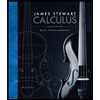 Calculus: Early TranscendentalsCalculusISBN:9781285741550Author:James StewartPublisher:Cengage Learning
Calculus: Early TranscendentalsCalculusISBN:9781285741550Author:James StewartPublisher:Cengage Learning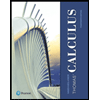 Thomas' Calculus (14th Edition)CalculusISBN:9780134438986Author:Joel R. Hass, Christopher E. Heil, Maurice D. WeirPublisher:PEARSON
Thomas' Calculus (14th Edition)CalculusISBN:9780134438986Author:Joel R. Hass, Christopher E. Heil, Maurice D. WeirPublisher:PEARSON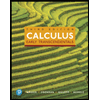 Calculus: Early Transcendentals (3rd Edition)CalculusISBN:9780134763644Author:William L. Briggs, Lyle Cochran, Bernard Gillett, Eric SchulzPublisher:PEARSON
Calculus: Early Transcendentals (3rd Edition)CalculusISBN:9780134763644Author:William L. Briggs, Lyle Cochran, Bernard Gillett, Eric SchulzPublisher:PEARSON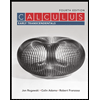 Calculus: Early TranscendentalsCalculusISBN:9781319050740Author:Jon Rogawski, Colin Adams, Robert FranzosaPublisher:W. H. Freeman
Calculus: Early TranscendentalsCalculusISBN:9781319050740Author:Jon Rogawski, Colin Adams, Robert FranzosaPublisher:W. H. Freeman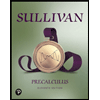
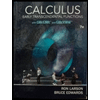 Calculus: Early Transcendental FunctionsCalculusISBN:9781337552516Author:Ron Larson, Bruce H. EdwardsPublisher:Cengage Learning
Calculus: Early Transcendental FunctionsCalculusISBN:9781337552516Author:Ron Larson, Bruce H. EdwardsPublisher:Cengage Learning

Calculus: Early Transcendentals
Calculus
ISBN:9781285741550
Author:James Stewart
Publisher:Cengage Learning

Thomas' Calculus (14th Edition)
Calculus
ISBN:9780134438986
Author:Joel R. Hass, Christopher E. Heil, Maurice D. Weir
Publisher:PEARSON

Calculus: Early Transcendentals (3rd Edition)
Calculus
ISBN:9780134763644
Author:William L. Briggs, Lyle Cochran, Bernard Gillett, Eric Schulz
Publisher:PEARSON

Calculus: Early Transcendentals
Calculus
ISBN:9781319050740
Author:Jon Rogawski, Colin Adams, Robert Franzosa
Publisher:W. H. Freeman


Calculus: Early Transcendental Functions
Calculus
ISBN:9781337552516
Author:Ron Larson, Bruce H. Edwards
Publisher:Cengage Learning
Use of ALGEBRA in REAL LIFE; Author: Fast and Easy Maths !;https://www.youtube.com/watch?v=9_PbWFpvkDc;License: Standard YouTube License, CC-BY
Compound Interest Formula Explained, Investment, Monthly & Continuously, Word Problems, Algebra; Author: The Organic Chemistry Tutor;https://www.youtube.com/watch?v=P182Abv3fOk;License: Standard YouTube License, CC-BY
Applications of Algebra (Digit, Age, Work, Clock, Mixture and Rate Problems); Author: EngineerProf PH;https://www.youtube.com/watch?v=Y8aJ_wYCS2g;License: Standard YouTube License, CC-BY